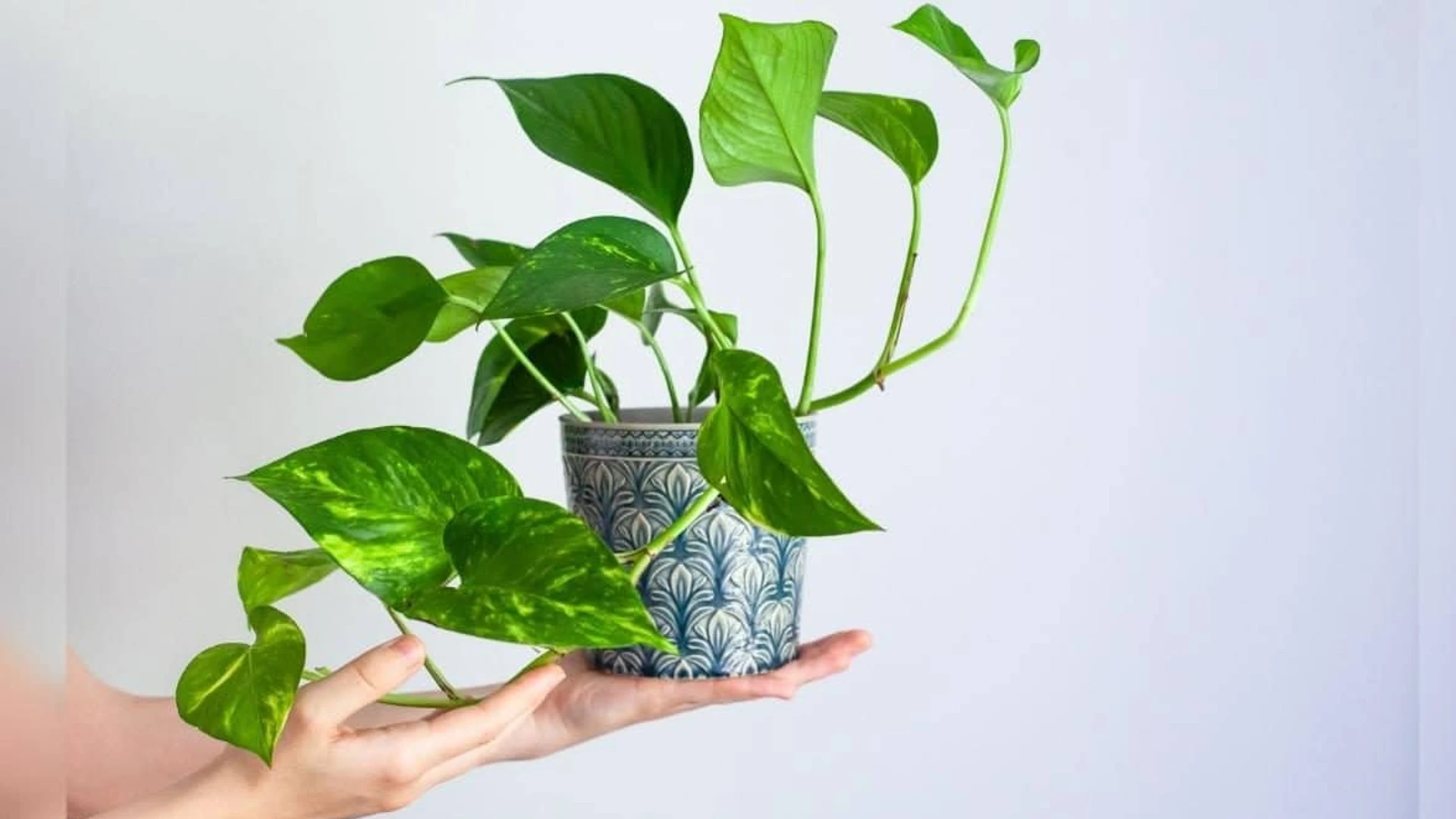The pothos plant is considered by many to be a great way to get started caring for houseplants. Since pothos care is easy and undemanding, this lovely plant is an easy way to add some green in your home.
Caring for Pothos Plants
Basic pothos care is very easy. These plants enjoy a wide range of environments. They do well in bright, indirect light as well as low light and can be grown in dry soil or in vases of water. They will thrive in nutrient rich soil, but do almost as well in nutrient poor soil.
Pothos plants make a great addition to your bathroom or office because they can tolerate low light. While pothos likes a wide variety of light conditions, they do not do well in direct sunlight.
If your pothos is highly variegated — particularly variegated with white — they may either not grow as well in low light or may lose their variegation if the light is too low. Only the green parts of the leaves can make energy for the plant, so it must be able to get enough light for energy or its growth will slow or the leaves will compensate for the lack of light by becoming more green.
Pothos is very popular due to the fact that it can be grown in water or in dry soil. Cuttings can be taken from a mother plant and rooted in water and kept in water as a houseplant. This is convenient for placing a pothos plant in hard to reach areas in a jug of water where it can remain untouched as long as water remains in the jug. On the opposite end, pothos can also be started in soil and will tolerate moderate periods of dry soil with little effect to the plant. Oddly enough, cuttings started in one growing medium have a hard time switching to the other. So, a pothos plant started in soil has a hard time thriving if moved to water, and a pothos cutting started in water will not do very well in soil, especially if it has spent a long period of time growing in water.
You can fertilize your pothos plant about once every three months and this will help the plant grow more quickly, but most people find that their plants grow quick enough even without being fertilized.
Pothos plants are an excellent choice for beginners as they are low maintenance and easy to care for. Here are some tips for caring for pothos plants:
- Light: Pothos plants can thrive in a wide range of light conditions, from bright, indirect light to low light. However, direct sunlight should be avoided as it can be harmful to the plant.
- Water: Pothos can be grown in both water and soil. If grown in soil, water the plant when the top inch of soil is dry. If grown in water, change the water once a week to prevent stagnation and maintain water quality.
- Fertilizer: While pothos plants can be fertilized every three months, most people find that their plants grow well without fertilization.
- Temperature: Pothos plants prefer temperatures between 60-85°F (15-29°C).
- Toxicity: Pothos plants are poisonous and should be kept out of reach of children and pets.
- Pruning: To encourage bushy growth, pinch back the tips of the stems. Pruning can also be used to control the size of the plant.
By following these simple care instructions, you can enjoy a thriving and healthy pothos plant in your home.
Are Pothos Plants Poisonous?
While pothos plants are an easy to care for houseplant, you do need to be aware that they are poisonous. Though rarely fatal, the plant can cause irritation and vomiting if ingested due to the fact that it contains calcium oxalates. Even the sap from the plant may cause highly sensitive people to break out in a rash. It is considered toxic to cats, dogs, and children, but as mentioned, it normally will make them very sick but will not kill them.
